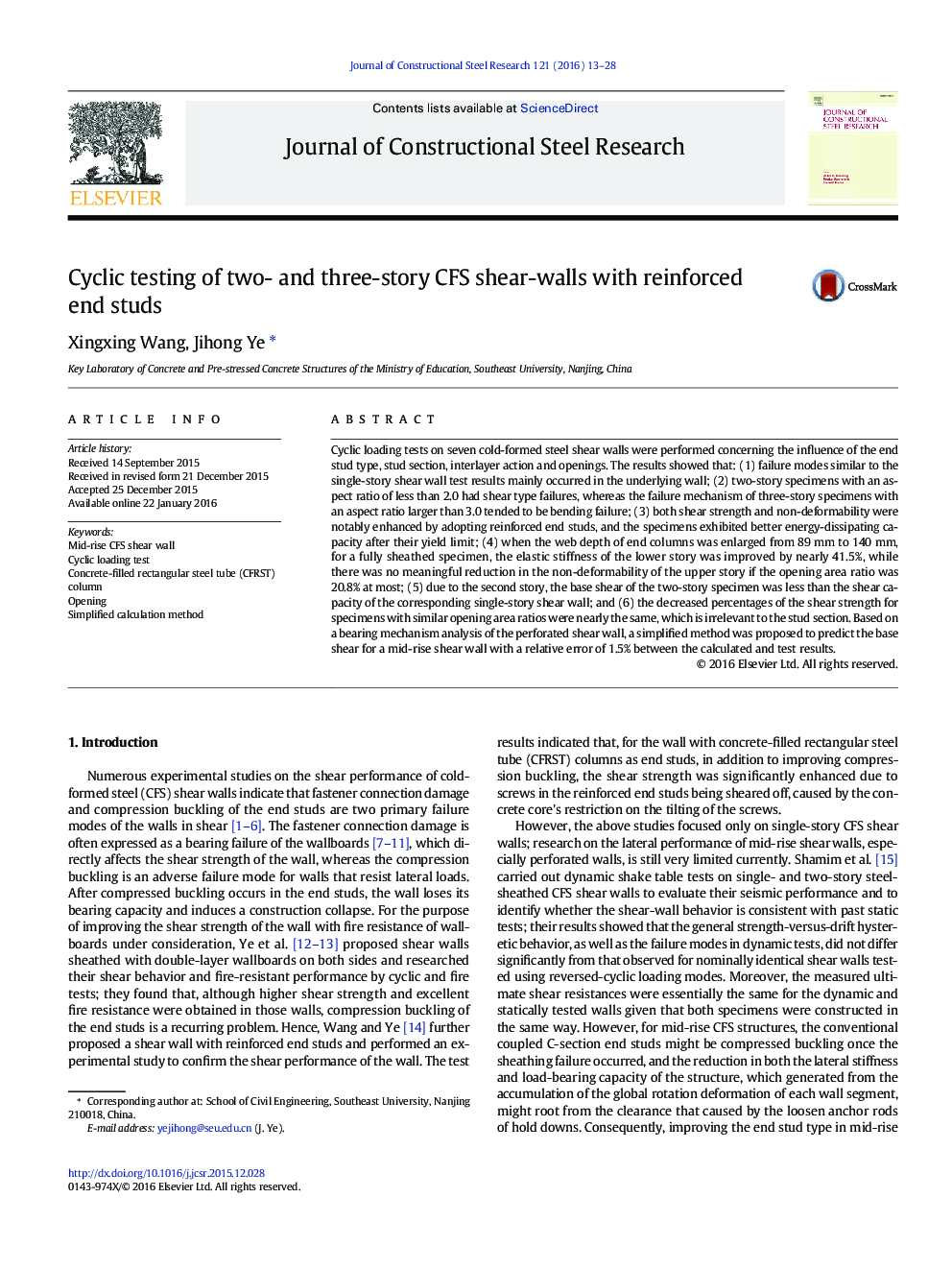| Article ID | Journal | Published Year | Pages | File Type |
|---|---|---|---|---|
| 284214 | Journal of Constructional Steel Research | 2016 | 16 Pages |
•Cyclic loading tests on seven mid-rise CFS shear walls were performed.•The behavior of the walls with reinforced and conventional end studs were compared.•Factors like the stud section, interlayer action and openings were considered.•A simplified method was used to predict the base shear for mid-rise perforated walls.
Cyclic loading tests on seven cold-formed steel shear walls were performed concerning the influence of the end stud type, stud section, interlayer action and openings. The results showed that: (1) failure modes similar to the single-story shear wall test results mainly occurred in the underlying wall; (2) two-story specimens with an aspect ratio of less than 2.0 had shear type failures, whereas the failure mechanism of three-story specimens with an aspect ratio larger than 3.0 tended to be bending failure; (3) both shear strength and non-deformability were notably enhanced by adopting reinforced end studs, and the specimens exhibited better energy-dissipating capacity after their yield limit; (4) when the web depth of end columns was enlarged from 89 mm to 140 mm, for a fully sheathed specimen, the elastic stiffness of the lower story was improved by nearly 41.5%, while there was no meaningful reduction in the non-deformability of the upper story if the opening area ratio was 20.8% at most; (5) due to the second story, the base shear of the two-story specimen was less than the shear capacity of the corresponding single-story shear wall; and (6) the decreased percentages of the shear strength for specimens with similar opening area ratios were nearly the same, which is irrelevant to the stud section. Based on a bearing mechanism analysis of the perforated shear wall, a simplified method was proposed to predict the base shear for a mid-rise shear wall with a relative error of 1.5% between the calculated and test results.
